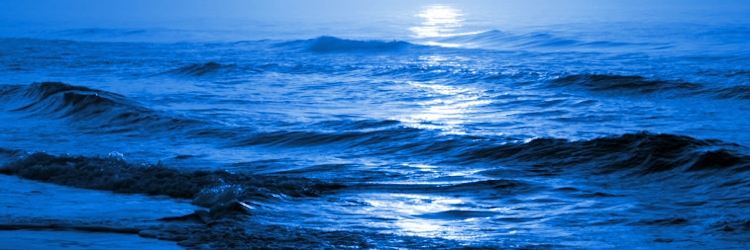Satellites and Storms Activity #3
And the Lows Go Round and Round

Author
Kevin Goff and Susan Haynes, Virginia Institute of Marine Science
Grade Level
8-12
Lesson Time
60 min
Objectives
- Describe atmospheric conditions from observing a basic weather map.
- Identify high and low pressure systems on a weather map based on respective indicators.
- Forecast conditions based on weather maps and satellite imagery of sea-surface temperature.
Hurricane, Northeaster, Nor'easter, Low pressure, Wind barb, Coriolis, Fetch
Materials Required
Credits
edited and updated by Carol Hopper Brill and Chris Petrone, Virginia Sea Grant, Virginia Institute of Marine Science Summary
Investigate weather patterns, weather maps and the effects weather has on the ocean, all using real ocean observing system data. Introduction
North Atlantic low pressure systems always rotate counterclockwise. Why? The rotation stems from the Coriolis Force, which is caused by the rotation of the earth on its axis. As the warm, wet air in a low pressure system rises, it draws air toward its center. The Coriolis Force deflects wind to the right, resulting in a counterclockwise pattern of windstreams around the low.
Identifying Lows
Go to an example weather map. Look at the isobars, the solid lines that form curving patterns on the map. They are usually measured in millibars (mb) of pressure. Where the isobars close around a low value, you have a Low. Where they close around a high value, it's a High.
High values = greater than 1001 mb, e.g. 1012 in this example.
Low values = lower than 1000 mb, e.g. less than 996 in this example.
See another example weather map.
For an excellent animation of current windstreams, visit Ventusky.com.
Data Activity
Go to Oceanweather, Inc. On the left, click on North Atlantic, "Southern Region," then click the "Marine Observations" icon at the top of the page.
Note: On Oceanweather.com Marine Observations images, the first 2 digits of the isobar reading are dropped as part of the meteorologist's shorthand. So a high reading might appear as "26" (meaning 1026), while a low might look like "89" (meaning 989).
- Search for Lows -- possible storm centers -- in the Atlantic. If there are no lows in the Southern region, try the view of the Northern region. If you find a low(s), record the latitude and longitude.
- What direction do the wind vectors point around the low?